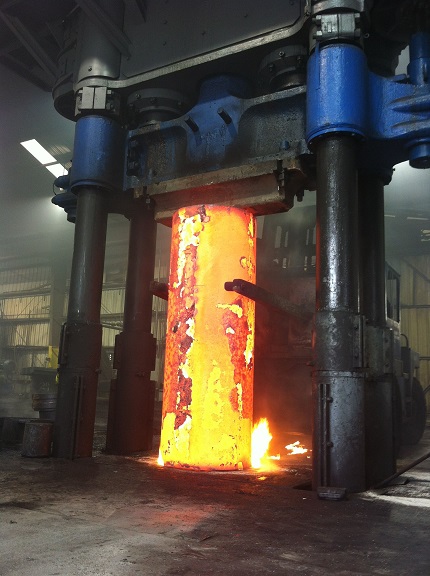
A Brief History of Carbon Steel – Part 3
For more info on this topic, check out A Brief History of Carbon Steel – Part 1 and A Brief History of Carbon Steel – Part 2.
The Bessemer Process was not the last innovation in industrial carbon steel production. In 1900, Paul Heroult perfected the electric arc furnace (EAF) which uses electrical current to heat charged metal. Electric arc furnaces were particularly popular because they cost a fraction of what big industrial furnaces, such as those used by Bethlehem Steel, cost and were well suited for carbon steel production. Electric arc furnaces can also produce steel from scrap and by World War II, was used extensively to produce steel alloys for the war effort. EAF
Electric Arc Furnace Steelmaking
Just after the turn of the century, another development occurred that would have a strong influence on the evolution of steel production. Paul Heroult’s electric arc furnace (EAF) was designed to pass an electric current through charged material, resulting in exothermic oxidation and temperatures up to 3272°F (1800°C), more than sufficient to heat steel production.
Initially used for specialty steels, EAFs grew in use and, by World War II, were being used for the manufacturing of steel alloys. The low investment cost involved in setting up EAF mills allowed them to compete with the major US producers like US Steel Corp. and Bethlehem Steel, especially in carbon steels, or long products.
Because EAFs can produce steel from 100% scrap—or cold ferrous—feed, less energy per unit of production is needed. As opposed to basic oxygen hearths, operations can also be stopped and started with little associated cost. For these reasons, production via EAFs has been steadily increasing for over 50 years and now accounts for about 33% of global steel production.
Oxygen Steelmaking
The majority of global steel production—about 66%—is now produced in basic oxygen facilities. The development of a method to separate oxygen from nitrogen on an industrial scale in the 1960s allowed for major advances in the development of basic oxygen furnaces.
Basic oxygen furnaces blow oxygen into large quantities of molten iron and scrap steel and can complete a charge much more quickly than open hearth methods. Large vessels holding up to 350 metric tons of iron can complete conversion to steel in less than one hour.
The cost efficiencies of oxygen steelmaking made open-hearth factories uncompetitive and, following the advent of oxygen steelmaking in the 1960s, open-hearth operations began closing. The last open-hearth facility in the US closed in 1992 and in China in 2001.
Turn to Forged Components, Inc. for your Carbon Steel ASME flanges
Forged Components uses carbon steel for products such as ANSI flanges, forged steel rings, and other industrial flanges. Contact us for your carbon steel flange manufacturing needs via our Contacts page or call us at (281) 441-4088.
